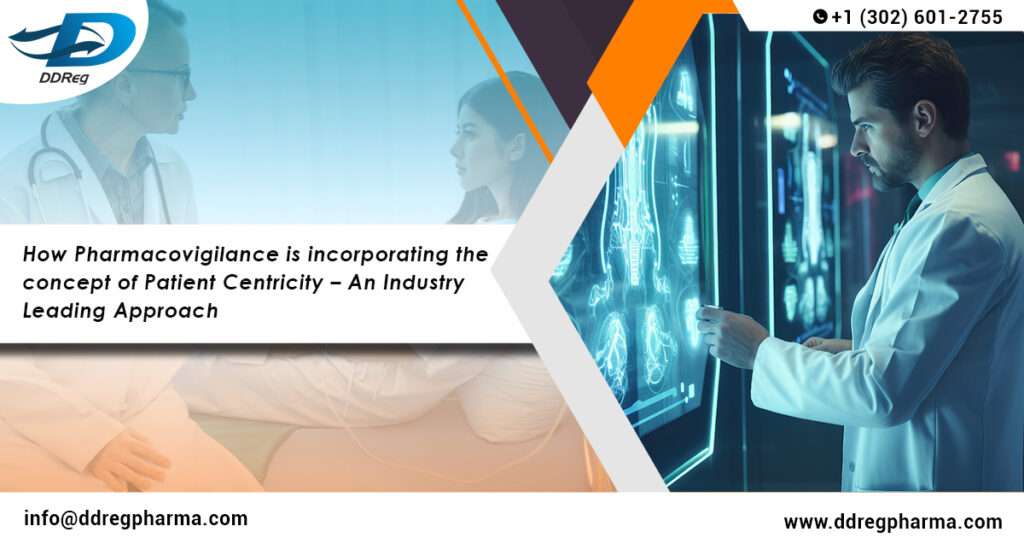In healthcare, assuring the safety of medications is equally as vital to developing innovative new treatments. Pharmacovigilance (PV), or “drug safety surveillance”, is the science of detecting, assessing, and preventing adverse drug effects or any related problems from drugs that has traditionally focused on data from healthcare providers, clinical trials and regulatory agencies.
Development of medicines aims to enhance patients’ lives, yet meaningful patient involvement in this process has been inconsistent. While initiatives for systematic patient involvement continue to expand, no universal framework exists yet; with greater awareness now the concept of patient-centricity Pharmacovigilance is becoming integrated into PV processes and thus changing how drug safety monitoring and management occurs.
What is Patient Centricity?
Patient-centricity means putting the patient at the center of healthcare decisions and processes. It involves understanding their needs, experiences, and preferences to improve their overall healthcare journey.
Patient-centricity recognizes that patients are active partners who offer valuable insights about their own health and treatment outcomes. In the past, patients were seen as passive recipients of care; today however, patients should be seen as active contributors who bring unique knowledge of themselves and treatment outcomes to bear on health services providers.
Pharmacovigilance relies heavily on data to ensure drug safety, but traditional approaches may overlook important real-world insights from patients. For example, while doctors might report adverse drug reactions as minor fatigue symptoms, patients might experience them as debilitating exhaustion affecting their daily lives.
By incorporating patient input, pharmacovigilance systems can:
- Capture a more accurate picture of how medicines affect patients in real-world settings.
- Identify rare or unexpected side effects more quickly.
- Improve trust and transparency between patients, healthcare providers, and pharmaceutical companies.
Understanding Patient-Centric Pharmacovigilance
Patient-centric pharmacovigilance involves actively engaging patients in the drug safety process, acknowledging them as pivotal contributors rather than passive recipients. This approach encompasses:
- Direct Patient Reporting: Encouraging patients to report adverse drug reactions (ADRs) directly provides firsthand insights into drug safety profiles. Such reports can uncover real-world effects that may not emerge during clinical trials. The Uppsala Monitoring Centre (UMC) has highlighted the value of patient-reported data in enhancing pharmacovigilance efforts.
- Leveraging Technology: The integration of digital tools, such as mobile applications and online platforms, facilitates seamless communication between patients and pharmacovigilance centers. These technologies enable real-time reporting and access to drug safety information, fostering a more responsive pharmacovigilance system.
- Patient Engagement in Safety Monitoring: Involving patients in the design and implementation of safety monitoring strategies ensures that their concerns and experiences are adequately addressed, leading to more effective risk management plans.
Examples
Organizations like the Clinical Trials Transformation Initiative (CTTI) and European Patients’ Academy on Therapeutic Innovation (EUPATI) have created tools and training programs to involve patients effectively in clinical trials, while regulatory agencies like FDA and EMA are introducing structured patient engagement processes during benefit-risk assessments.
Conclusion
Implementing patient-centric principles into pharmacovigilance represents an exciting shift toward more responsive drug safety monitoring. By prioritizing patient input and capitalizing on modern technologies, pharmaceutical industries can build stronger relationships with communities they serve while improving patient safety.
DDReg can assist pharmaceutical companies to navigate these changes, ensuring both compliance and innovation. Contact us today to discover how we can assist you in leveraging these transformative concepts. Read more from DDReg here: Advanced Pharmacovigilance Strategies for Rare Disease Drugs

